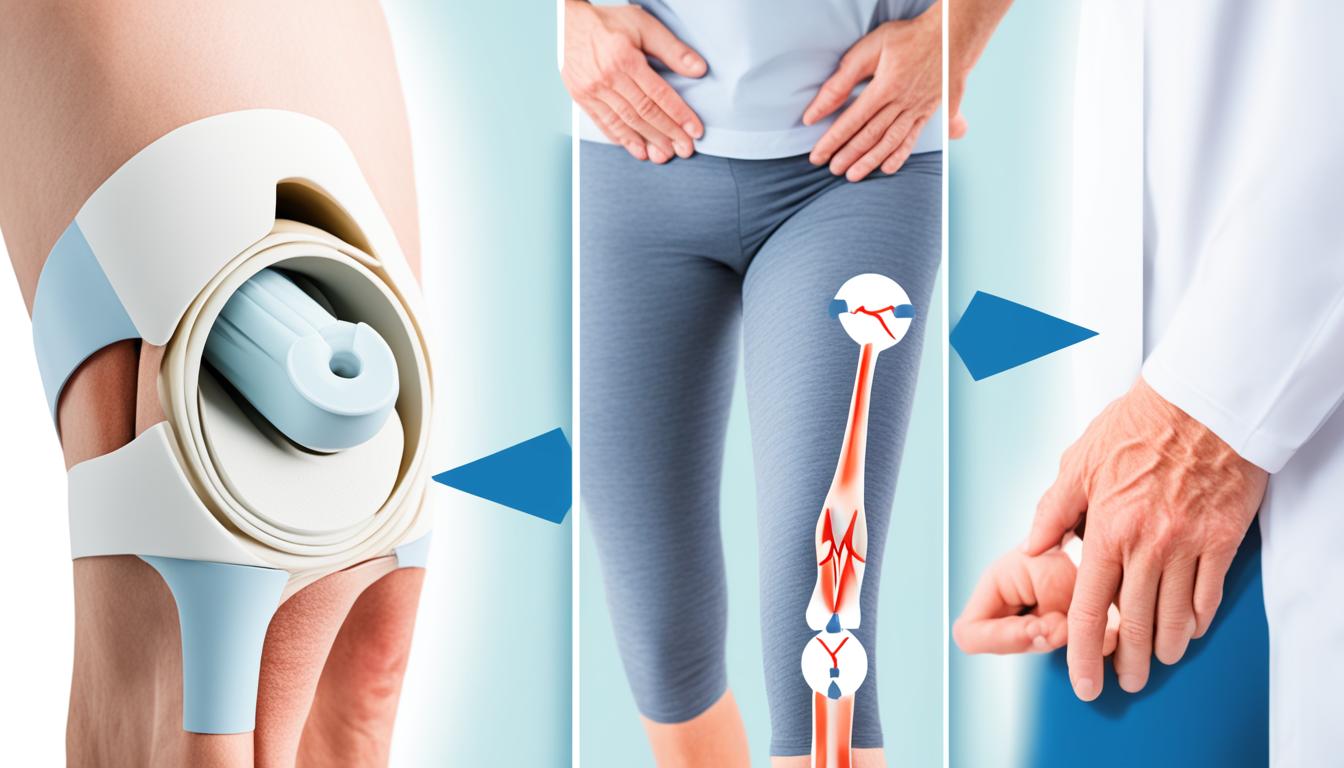Hip dysplasia, known as DDH, affects mainly children. It’s a hip joint issue where the socket doesn’t fit well with the thigh bone. This makes the leg lengths different, your walk may be odd, and you might feel less stretch in one side. Catching DDH early is very important for treatment. Sometimes, stem cell therapy can help in severe cases.
Key Takeaways:
- DDH, or hip dysplasia, troubles kids mostly. It’s when the hip socket and thigh bone don’t connect right.
- It causes issues like not having the same leg lengths, walking differently, and feeling tight on one side.
- Spotting DDH soon is key to treating it well.
- Stem cell therapy might be a good option for the worst cases of DDH.
- But, we still need more study to know if and how well stem cell therapy works against DDH.
Causes and Risk Factors of DDH
DDH, or hip dysplasia, has many causes and risks. Knowing these helps spot who’s at more risk. This knowledge is key for early DDH detection.
Genes are a big player in DDH formation. A family history of hip dysplasia might increase your risk. Note that specific genes can cause hip joint abnormalities and lead to DDH.
Females have a higher DDH risk than males. This might be due to body and hormone differences. It’s crucial to watch for DDH symptoms in baby girls, to act early if needed.
The baby’s position in the womb matters too. Being in breech position can up the DDH risk. Babies in this position might have hips misaligned, which may cause DDH.
Then there’s improper swaddling. This, plus tight womb spaces or how moms carry babies, can cause DDH. So, these environmental factors are also critical to watch.
Summing up, DDH risk comes from genes, family history, female gender, breech position, bad swaddling, and certain environments. Spotting these early can help manage DDH better, for a stronger start in life.
Diagnosis and Treatment of DDH
Early detection is key in treating DDH (hip dysplasia) well. Pediatricians often use ultrasound to spot signs in newborns. This helps in seeing how bad the hip’s shape is and deciding on further steps.
If a baby has DDH, the treatment depends on how bad it is and the baby’s age. For mild cases, a harness can gently guide the hip joint into proper shape. This helps it grow right and decreases future problems.
But, for more serious cases, surgery might be needed. A surgery called corrective osteotomy can fix the hip joint. The surgeon cuts and moves the bones to make a better hip socket and aligns the joint better.
Stem cell therapy is a new hope for treating DDH. These cells can fix the damaged hip and support healthy growth. Though the research is ongoing, early findings are positive about using stem cells for DDH.
Advantages of Stem Cell Therapy for DDH
Stem cell therapy has many benefits in treating DDH. First, it’s less invasive, lowering certain surgical risks. It also helps the body to heal itself, aiming for better long-term results for kids.
It can also stop or lower future hip issues like early arthritis. By fixing hip damage and aligning joints, stem cell therapy may prevent later problems.
Stem cell therapy is promising but still needs more study. Researchers are working to prove its benefits and find the best ways to use it for DDH.
Conclusion
DDH, or hip dysplasia, affects many kids and can lead to serious issues if not found early. It’s key to spot it soon and get the right treatment. This can prevent more harm to the hip joint.
DDH treatments vary based on how bad it is and the child’s age. For mild cases, doctors might use special harnesses to help the hip grow correctly. But for severe DDH, surgery like corrective osteotomies could be needed to fix the hip joint.
Stem cell therapy is also showing promise for DDH. Research hints that stem cells might help the hip tissue heal and the joint grow well. Yet, we need more studies to confirm if this really works over time.
Getting children with DDH help early and with the right care is very important. This way, they have a better chance of a strong, healthy hip. Learning about new treatments, like stem cell therapy, can help doctors do their best for these kids.

